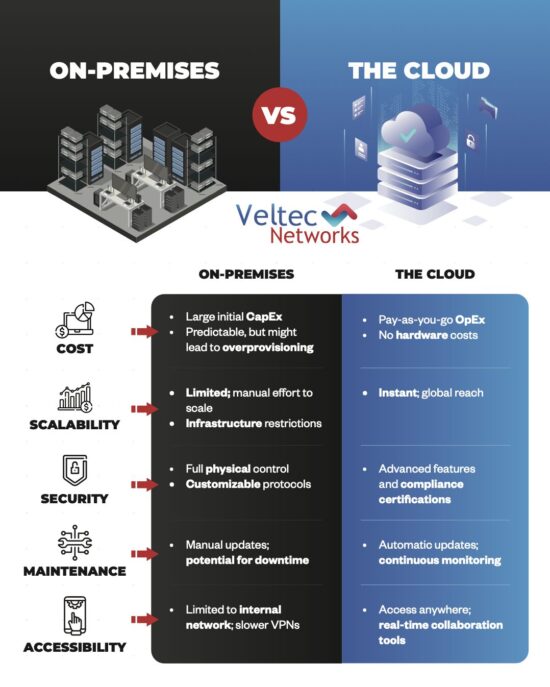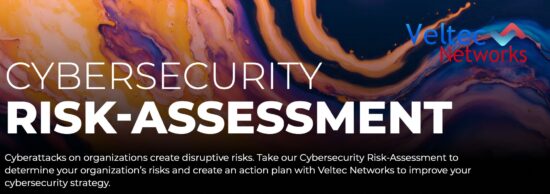2 Ways To Reduce Nonprofit Cybersecurity Risks
Managing a nonprofit organization is a difficult process. Resources are limited, and therefore even more valuable than in profitable companies. When the margins are thin and the operation is small and efficient, expenditures to keep your IT systems running properly can be difficult to justify.
But that doesn’t mean you can risk under-investing in cybersecurity. When resources are stretched thin, many nonprofits will cut corners where they think they can. Often, that means cybersecurity.
That’s why up to 70% of nonprofits have never conducted a vulnerability assessment. And nearly the same number have no type of cybersecurity response plan in place.
Everyone is aware that a data breach is always a possibility. But when it comes to nonprofits, those at risk are the ones that actually donated their money to a worthy cause. The last thing you want to do is put them at risk. That’s why you need to make sure you’ve invested in IT services that will keep your data (including the financial and personal information of your donors) secure.
2 Key Ways To Reduce Your Cybersecurity Risks
1. Train Your Staff Members & Volunteers
A majority of cyber security services offered today include the best in vital technologies, from firewalls to anti-malware to data encryption and more. However, as important as this technology is, on its own, it simply isn’t enough. The key to truly comprehensive cyber security is simple, yet often overlooked: the user.
Cyber security gimmicks — such as “set it and forget it” firewalls and antivirus software — fail to account for how important the user is. Even the most effective digital security measures can be negated by simple human error, which is why conventional solutions are simply not enough to ensure your business’ safety.
Much of cyber security is dependent on the user, and as such it’s vital that you properly educate your employees and volunteers in safe conduct. The more your workforce knows about the security measures you have in place, the more confidently they can use the technology is a secure manner.
A comprehensive cybersecurity training program will teach your staff how to handle a range of potential situations:
- How to identify and address suspicious emails, phishing attempts, social engineering tactics, and more.
- How to use business technology without exposing data and other assets to external threats by accident.
- How to respond when you suspect that an attack is occurring or has occurred.
2. Implement Proven Cybersecurity Best Practices
Cybersecurity cannot be overlooked – improperly secured technology can put your donors, your mission and yourself at risk.
If you don’t mitigate risk and protect your nonprofit organization’s confidential data, you could face a costly data breach. Just one breach could result in hefty fines, penalties, expensive litigation and a ruined reputation that scares donors away.
A properly defined security policy has three primary objectives:
- Confidentiality of data and information assets and to confine these to only those authorized to access them.
- Integrity of data to keep it intact, complete and accurate, and to keep IT systems running reliably.
- Availability so data or IT systems are accessible to authorized users when required.
In developing a policy to help you meet these objectives on an ongoing basis, your policy should be detailed and include information on the following:
- Identify a general approach to data security.
- Denote the steps taken to detect and prevent compromising of data and IT infrastructures including misuse of information technology, networks, computer systems, and applications.
- How to protect the reputation of your nonprofit with respect to its legal and ethical responsibilities.
- To observe the rights of your members and donors and to provide effective mechanisms to respond to complaints, questions, and concerns about non-compliance with the policy.
Easier said than done, right? After all, there’s a difference between knowing what you need to do to enhance your cybersecurity, and actually doing it.
Allow us to help…
We’re Giving Away A Year Of Technology Support!
We are a big supporter of nonprofits and we wanted to show our support in a big way this year. On Thanksgiving Day (November 28, 2019) we will be awarding one nonprofit in the Silicon Valley with Free Technology Support for their organization for one full year.
CLICK HERE TO ENTER RIGHT NOW
The contest entry period will run from August 1, 2019 until November 27, 2019. Our team of judges will select the winner based on the online entries that we receive.
The winner will be announced LIVE on Facebook on Thanksgiving Day!
Like this article? Check out the following blogs to learn more:
How Are Face and Touch Recognition Changing iCloud Access?






